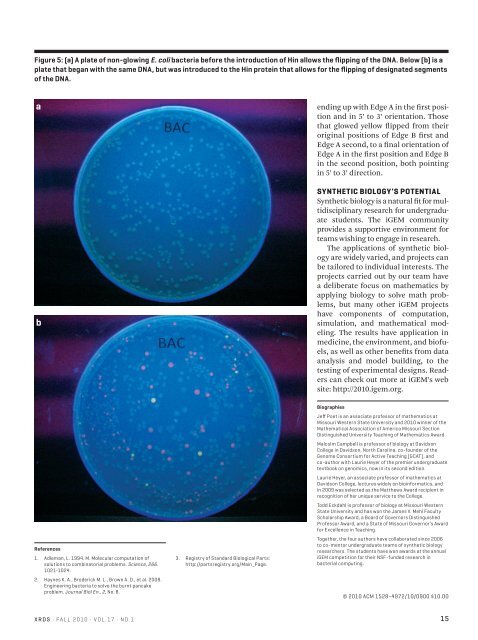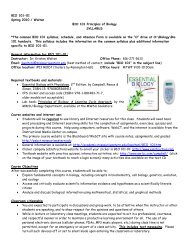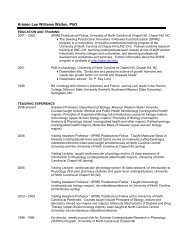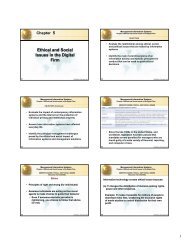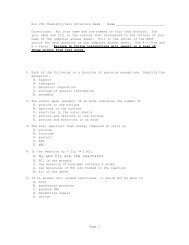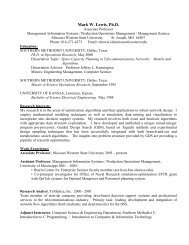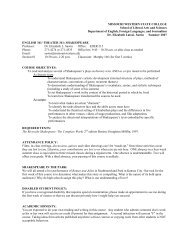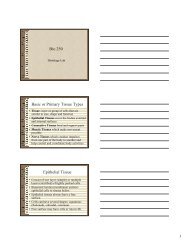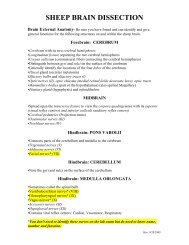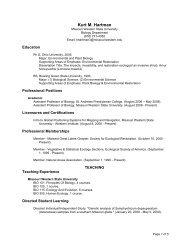Bacterial computing
Bacterial computing
Bacterial computing
- No tags were found...
Create successful ePaper yourself
Turn your PDF publications into a flip-book with our unique Google optimized e-Paper software.
Figure 5: (a) A plate of non-glowing E. coli bacteria before the introduction of Hin allows the flipping of the DNA. Below (b) is aplate that began with the same DNA, but was introduced to the Hin protein that allows for the flipping of designated segmentsof the DNA.abending up with Edge A in the first positionand in 5’ to 3’ orientation. Thosethat glowed yellow flipped from theiroriginal positions of Edge B first andEdge A second, to a final orientation ofEdge A in the first position and Edge Bin the second position, both pointingin 5’ to 3’ direction.SYNTHETIC BIOLOGY'S POTENTIALSynthetic biology is a natural fit for multidisciplinaryresearch for undergraduatestudents. The iGEM communityprovides a supportive environment forteams wishing to engage in research.The applications of synthetic biologyare widely varied, and projects canbe tailored to individual interests. Theprojects carried out by our team havea deliberate focus on mathematics byapplying biology to solve math problems,but many other iGEM projectshave components of computation,simulation, and mathematical modeling.The results have application inmedicine, the environment, and biofuels,as well as other benefits from dataanalysis and model building, to thetesting of experimental designs. Readerscan check out more at iGEM’s website: http://2010.igem.org.References1. Adleman, L. 1994. M. Molecular computation ofsolutions to combinatorial problems. Science, 266.1021-1024.2. Haynes K. A., Broderick M. L., Brown A. D., et al. 2008.Engineering bacteria to solve the burnt pancakeproblem. Journal Biol En., 2, No. 8.3. Registry of Standard Biological Parts:http://partsregistry.org/Main_Page.BiographiesJeff Poet is an associate professor of mathematics atMissouri Western State University and 2010 winner of theMathematical Association of America Missouri SectionDistinguished University Teaching of Mathematics Award.Malcolm Campbell is professor of biology at DavidsonCollege in Davidson, North Carolina, co-founder of theGenome Consortium for Active Teaching (GCAT), andco-author with Laurie Heyer of the premier undergraduatetextbook on genomics, now in its second edition.Laurie Heyer, an associate professor of mathematics atDavidson College, lectures widely on bioinformatics, andin 2009 was selected as the Matthews Award recipient inrecognition of her unique service to the College.Todd Eckdahl is professor of biology at Missouri WesternState University and has won the James V. Mehl FacultyScholarship Award, a Board of Governors DistinguishedProfessor Award, and a State of Missouri Governor’s Awardfor Excellence in Teaching.Together, the four authors have collaborated since 2006to co-mentor undergraduate teams of synthetic biologyresearchers. The students have won awards at the annualiGEM competition for their NSF-funded research inbacterial <strong>computing</strong>.© 2010 ACM 1528-4972/10/0900 $10.00X R D S • F A L L 2 0 1 0 • V O L . 17 • N O . 1 15


